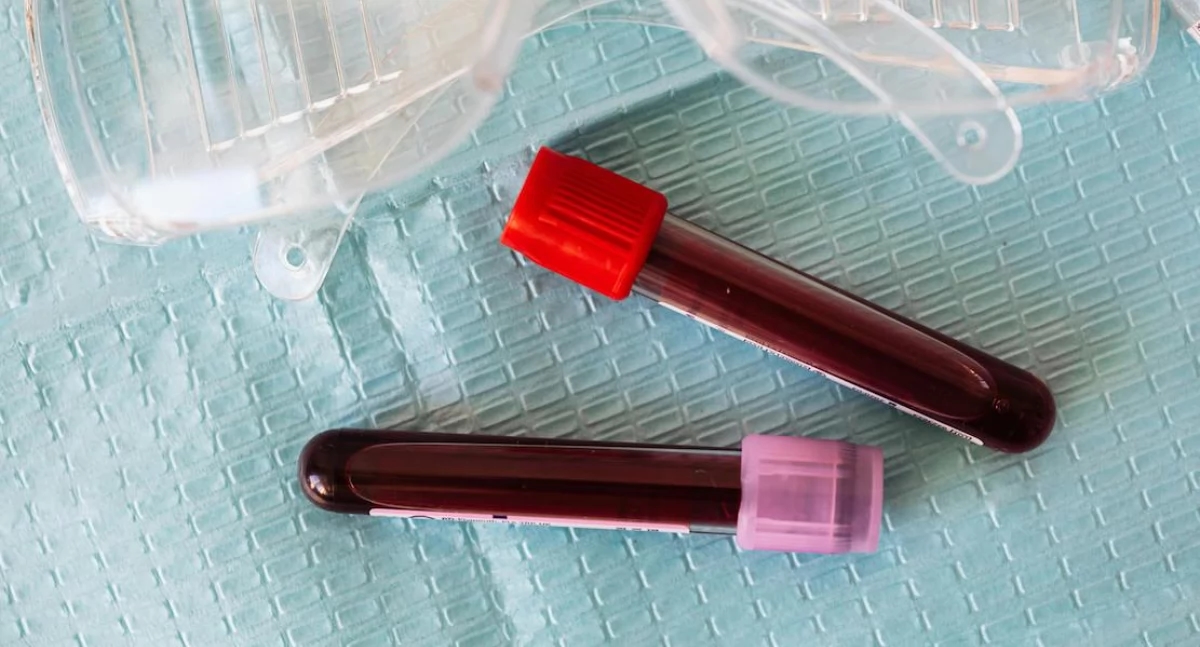PTSD. How many Ukrainians suffer from post-traumatic stress disorder due to the war?

Post-traumatic stress disorder (PTSD) can affect anyone. People caught in the middle of a war are particularly vulnerable to various types of trauma. This war has been raging beyond our eastern border for over three years. Research by a team composed primarily of Ukrainian scientists indicates that the full-scale Russian invasion of Ukraine has resulted in a surge in mental disorders in the form of PTSD, with refugees, some of whom have arrived in Poland, complaining most. This prevalence far exceeds the prevalence of the condition in the literature. One study by researchers found that one in two Ukrainians may have been affected by PTSD.
Many people have experienced some very unpleasant event in their lives, from which it was difficult to recover. Trauma can come from many sources. These include being involved in a traffic accident, being assaulted, raped, molested, kidnapped, tortured, or being diagnosed with a life-threatening illness. But perhaps nothing beats being in the midst of war, as it encompasses almost the full range of possible traumas.
We generally have no chance of remembering the Second World War. Someone who was ten years old in 1945 is now 90. Few people live to such a ripe old age. After the horrific episode of World War II, many decades of peace passed in Europe. Indeed, there were "civil wars" in the former Yugoslavia, after which a cluster of new states emerged. Yugoslavia was a terrible case, because in addition to military conflicts, crimes against civilians occurred, largely on ethnic grounds.
The Balkan tragedy, however, pales in comparison to what's happening in Ukraine, which has been fighting the Russian invader for over three years. Many observers believe that a war, albeit not a full-scale one, has been raging in our eastern neighbor since 2014, when Russia annexed Crimea and unleashed a civil war in the Donetsk and Luhansk regions.
Both cases, however, may be instructive for Polish society, including decision-makers, in the context of Moscow's escalating aggressive stance towards Warsaw. And warfare causes not only physical but also psychological harm, which can result in post-traumatic stress disorder (PTSD).
PTSD is a mental disorder that develops in response to an extremely stressful event (traumatic event) that exceeds a person's ability to cope and adapt. It is classified under ICD-10 unit F43.1.
"[…] Typical features include episodes of repeated reliving of the trauma in the form of intrusive memories (flashbacks), dreams, or nightmares, occurring against a persistent background of numbness and emotional blunting, detachment from other people, unresponsiveness to the environment, anhedonia, and avoidance of action and trauma-like situations. It is usually a state of autonomic hyperarousal with hypervigilance, a heightened reaction to fear, and insomnia. Anxiety and depression are often associated with the above symptoms, and suicidal ideation is not uncommon. The onset of the disorder follows the trauma with a latency period that can range from several weeks to months. Prognosis is variable, but recovery can be expected in most cases [...]" – we read in the International Classification of Diseases (ICD-10).
Over 70% of respondents reported one traumatic event in their lifetime, and 30.5% were exposed to four or more such episodes. Exposure varied by country, sociodemographics, and history of prior traumatic events. Being married was the most consistent protective factor. Exposure to interpersonal violence was most strongly associated with subsequent traumatic events. These are some of the findings from one of the most comprehensive studies on trauma, published in Psychological Medicine by a team of 34 scientists from around the world – you can read it at this link: https://www.cambridge.org/core/journals/psychological-medicine/article/epidemiology-of-traumatic-event-exposure-worldwide-results-from-the-world-mental-health-survey-consortium/F06E14BA4DF09A29CCA81909C285ABE9 .
The study was conducted on a sample of 24 countries (Poland was not included). This approach allows us to identify countries that are more conducive to trauma and those that are more "calm." These are shown in the infographic below, where green indicates the lowest percentage of the population exposed to trauma, while red indicates the highest percentage of people affected by a traumatic event.
The lowest rates of trauma were recorded in Bulgaria (28.6%), Romania (41.5%), China (52.5%), Spain (54.0%), and Italy (56.1%). The highest rates were recorded in Ukraine (84.6%), Peru (83.1%), the United States and Colombia (82.7%), and New Zealand (79.3%).

Source: Benjet et al. (2015)
The research team led by Benjet identified approximately 40 different traumas that people may face . For this analysis, I selected some of them based on the highest frequency of occurrence (top ten), and then added the frequency of the incident involving the presence of civilians in a military zone. These are specific traumas, not those assigned to the "other" category, which, due to its scope, includes many specific traumas not defined by the study authors.
In first place is "unexpected death of a loved one" (31.4%), followed by "witnessing death/dead body/human harm" (23.7%) and "assault with or threat of a weapon" (14.5%). The incidence of "civilians in a war zone" is only 5%.

Source: own study based on Benjet et al. (2015)
According to researchers, certain professions are particularly at risk of post-traumatic stress disorder. Intuition, of course, rightly suggests that these are professions for which regular encounters with various misfortunes in many dimensions are a daily occurrence. However, this is only part of the truth, as representatives of seemingly "peaceful" professions are also at risk of developing PTSD. Among the most prominent are military personnel, police officers, firefighters, paramedics, healthcare personnel in general, railway drivers, divers, journalists, sailors, as well as people employed in banks, post offices, and shops .
Not every trauma automatically leads to PTSD. Much depends on various contributing factors. According to the WHO, 3.9% of the global population suffers from PTSD. The disorder affects people of all genders and ages, but women are more likely to be affected.
PTSD also affects children, who sometimes don't verbalize trauma but express negative memories through written forms. Therefore, it's worth observing whether a child who enjoys drawing or painting develops a disturbing style in their work, which could be a sign that something bad is happening in their environment.
The WHO average applies to all cases, but the literature suggests that people exposed to war are at significantly greater risk of developing PTSD. It's estimated that 15.3-30.6% of people exposed to this risk suffer from PTSD . You can read a detailed study on this topic from BMJ Global Health here: https://gh.bmj.com/content/bmjgh/6/7/e006303.full.pdf
Some people believed that peace would reign supreme after the end of the Cold War. However, this was a pipe dream, as statistics from the Swedish Analytical Center at Uppsala University demonstrate. The beginning of the third decade of this century has been the hottest period of interstate armed conflict since the end of the Cold War. The scale of the Russian-Ukrainian war is far greater than what we saw in the 1990s, when the Balkans erupted and a wave of violence swept through Croatia, Bosnia and Herzegovina, Serbia, and Kosovo.

Source: Uppsala Conflict Data Program
The study, published in BMJ Global Health, covered armed conflicts from 1989 to 2019, and therefore did not include Russia's aggression against Ukraine (2022). Has the 15-30% rate of PTSD reported therein changed, or has everything remained within the "normal" range? The news is not encouraging. Things are much, much worse.
There is little research on this topic, but the work of a team of six scientists, five from Ukraine and one from Canada, is certainly noteworthy. You can read the study at this link: https://www.thelancet.com/action/showPdf?pii=S2666-7762%2823%2900192-8 .
The team's work is noteworthy for several reasons. First, it takes a comprehensive approach to mental health. In addition to PTSD, the analysis also assessed the intensity of stress and anxiety. Second, it is the first scientific study on the mental health of Ukrainians in the 9-12 months since the start of the Russian invasion in February 2022. Third, the study participants were divided into three groups: non-displaced persons (NDP), internally displaced persons (IDP), and refugees (those who fled abroad due to the war). Therefore, the results may be a cause for reflection not only for Ukrainian caregivers but also for Polish people, given the massive influx of migrants from the East into our country.
The study sample included nearly 3,200 participants, with the largest sample size being NDPs (61.6%), followed by refugees (22.5%), and finally IDPs (15.9%). Importantly, study participants came from all Ukrainian oblasts, ensuring comprehensive, not selective, coverage.
In the case of PTSD, the researchers used two methods to measure the disorder. They used the PCL-5, a PTSD checklist (those curious about the PCL-5 can view the questionnaire at this link: https://phzdrowia.pl/pcl-5/ ).
This is a 20-point self-assessment scale in which the participant rates the severity of their symptoms over the past month (the final score ranges from 0 to 80). The cutoff point for classifying participants as having PTSD was 33 points, which is consistent with the majority view (31-33 points can be considered a consensus). All participants who scored at least 33 points were classified as suffering from PTSD. The results of this sample are labeled A in the infographic below. The second method of measurement was whether the participants met the characteristic symptom pattern of PTSD sufficient for a diagnosis of the disorder according to the DSM-V. This cohort was designated cohort B.
The results of both trials are shown in the infographic below (in dark blue are people with PTSD). They are divided into three subgroups: NDP, IDP, and refugees. Weighting each group's share of the total, we find that in Study A, the rate of people suffering from PTSD was 37.1%, while in Study B, it was 54.1% . The range of 37-54% significantly exceeds the 15-30% reported by the researchers who published their findings in BMJ Global Health.
In each case, refugees were most at risk of developing post-traumatic stress disorder – 47.2% (A) and 62.2% (B), respectively.

Source: Lushchak et al. (2024)
Updated: 26/10/2025 18:00
politykazdrowotna





